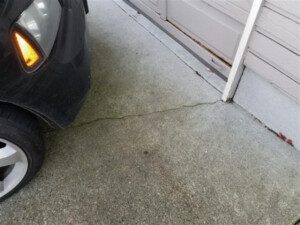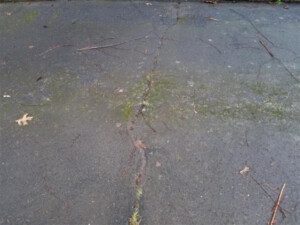Concrete driveways are a common part of the exterior of a home. They provide an even surface for vehicles and can be an integral part of providing access to a home. However, concrete will almost always crack and this is often times just part of the curing process.
Since concrete expands and contracts due to temperature changes, this will often times lead to cracking in the concrete surface. This is why contractors install control joints in the driveway surface to encourage cracking at the joints rather than random cracking in the slabs. These joints are typically installed eight to ten feet apart and are typically one inch deep, depending on the size and depth of the concrete pour. As the concrete cures and as it expands and contracts over time, these joints help to keep cracks inside the joint and prevent random shrinkage cracking across the slab.
Most cracks fall into one of the four categories listed below:
· Hairline cracks
· Shrinkage cracks
· Settlement cracks
· Structural cracks
Hairline cracks are surface cracks that usually only need to be repaired if they begin to widen over time or become a hazard. Shrinkage cracks are formed when the concrete is first curing and can be prevented with control joints if properly installed during the curing process. Settlement cracks are most often present in concrete slabs where the ground was not properly compacted during construction. In this area, the concrete sinks and forms a settlement crack. Structural cracks are typically large in size, can be uneven, (can be a quarter inch, however this can vary) and often run through the entire slab. These often require repair or replacement of the concrete slab and can indicate an underlying structural issue.
While structural cracking requires the evaluation of a qualified contractor, hairline, shrinkage, and settlement cracks can often be sealed to prevent worsening of the crack due to temperature changes and moisture intrusion.
Sealing cracks that are ¼ inch or larger is usually recommended in order to prevent cracks from getting worse. While cracks less than this can benefit from being sealed as well, this is the generally accepted point where a crack should be sealed in order to prevent moisture intrusion. Moisture intrusion into these cracks can cause the moisture to freeze in cold weather and expand the crack.
The video below provides a visual demonstration on cleaning, prepping, and caulking common driveway cracks:


